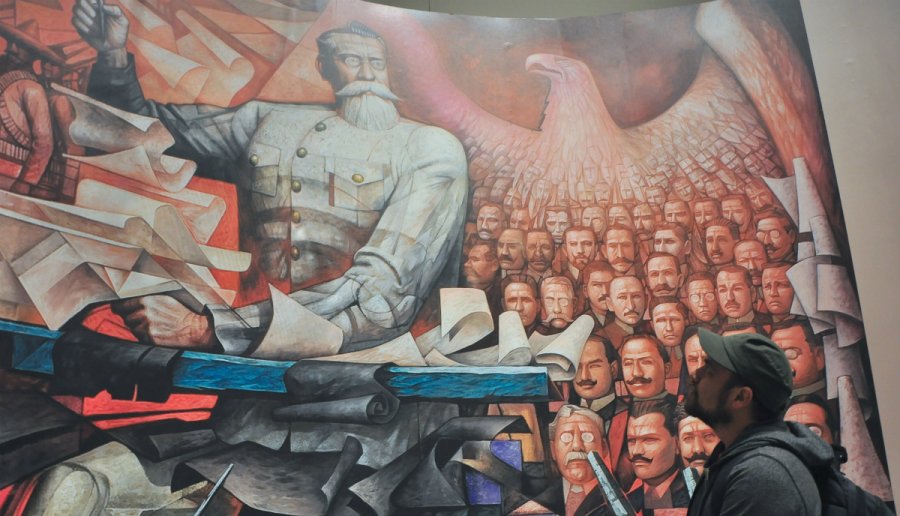Noticias
At Chapultepec Castle
The exhibition tours A 100 days that made modern Mexico
February 16, 2017The exhibition A 100 days that made modern Mexico is made up of almost 250 pieces, among documents, plastics art work, furniture, photographs and publication. The debate by the Constitution 1916-1917 has been seen by over 16,000 people six days after its opening.
The exhibition, officially opened on February 15th, is in the National Museum of History, Chapultepec Castle. It addresses the environment that was experienced during the 100 days prior to the enactment of our Magna Carta on February 5th, 1917.
During a special tour, the director of the National Institute of Anthropology and History (INAH, for its acronym in Spanish), Diego Prieto, stood out that it is a simple but magnificent exhibition, which adds to the celebration of the centenary of the Constitution of 1917.
Opened from February 9th in the Temporary Exhibitions Hall of Chapultepec Castle, it will be on view until June 25th and presents in a didactic way what the Constitution means for the country as well as its process.
The Mexican Revolution lasted more than 10 years, that is to say about 3,500 days, of which 100 drew the new Mexican face: " the hope in justice, the justice backed by the word, in the word become law”, Diego Prieto said.
Those 100 days that went from the elections of constituent deputies to the enactment of a new constitution, are the genesis of modern Mexico that we now live.
The director of INAH pointed out that the constituents who were full of optimism, drew the fate of the nation and contributed to build a new reality, not to return to the past, but to imagine a more fair society and a more dignified country.
Meanwhile, the director of the National Museum of History, Salvador Rueda Smithers said that this exhibition "tries to claim the memory in front of history, ideas versus facts. It seeks to draw the faces of men who over 100 days had the task of imagining that problems could be solved, that social relations should be regulated to bring the greatest of ideals: justice”.
In the presence of José Enrique Ortiz, National Coordinator of Museums and Exhibitions of INAH, he pointed out that this exhibition shows Mexico born of the Revolution, which could not miss Porfirian peace except in the belief that the nature of things could improve, so that a legal pillar of society’s hopes that sought to change was set up.
A 100 days that made modern Mexico receives the visitor with A girl learning the story of Angel Zárraga; a copy of the Constitution of 1917, as well as emblematic pieces such as the model of the mural of the Hospital La Raza by David Alfaro Siqueiros and a presidential chair of the second half of the 19th century.
The public will also be able to admire the copy of the Plan de Guadalupe of 1913, works by Diego Rivera as The dream of the poor and The fruits of the earth, bills of the constitutionalist government, Francisco Villa’s sarakof and mitazas, Alfredo Zalce’s engravings , trading cards of the Constituent Congress, as well as listening to one of the most emblematic speeches by Venustiano Carranza.
La exposición que cierra con un mural de Jorge González Camarena estará abierta al público hasta el 25 de junio en el Museo Nacional de Historia, Castillo de Chapultepec, en horario de martes a domingo de 9:00 a 17:00 horas. Costo: $70. Domingos, entrada libre.
The exhibition closes with a mural by Jorge González Camarena, will be open to the public until June 25th at the National History Museum, Castillo de Chapultepec, from Tuesday to Sunday from 9:00 am to 5:00 pm. Cost: $ 70. Sundays, free entry.
Mexico,Distrito Federal
